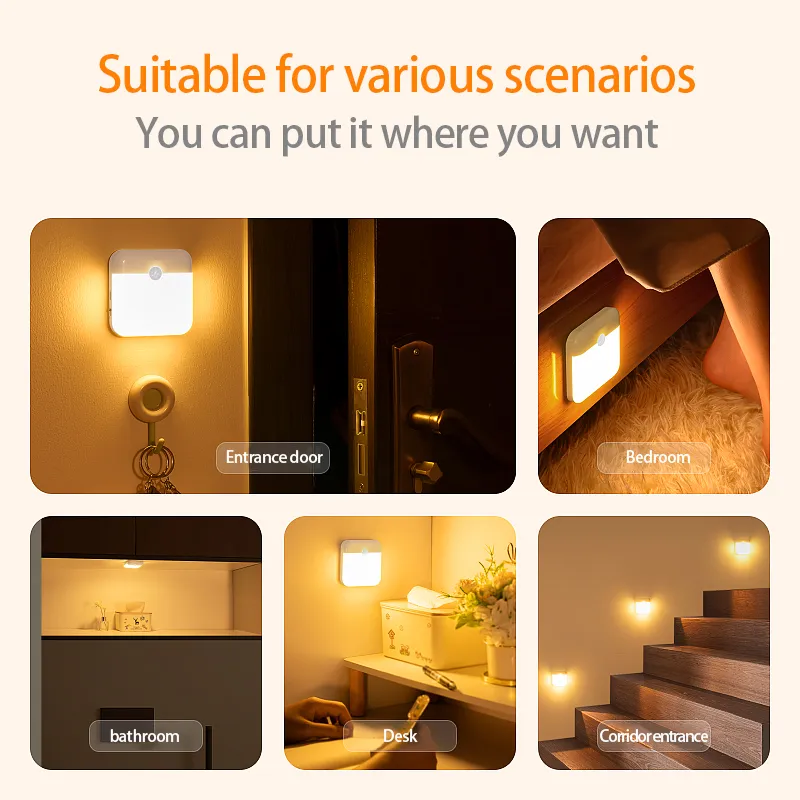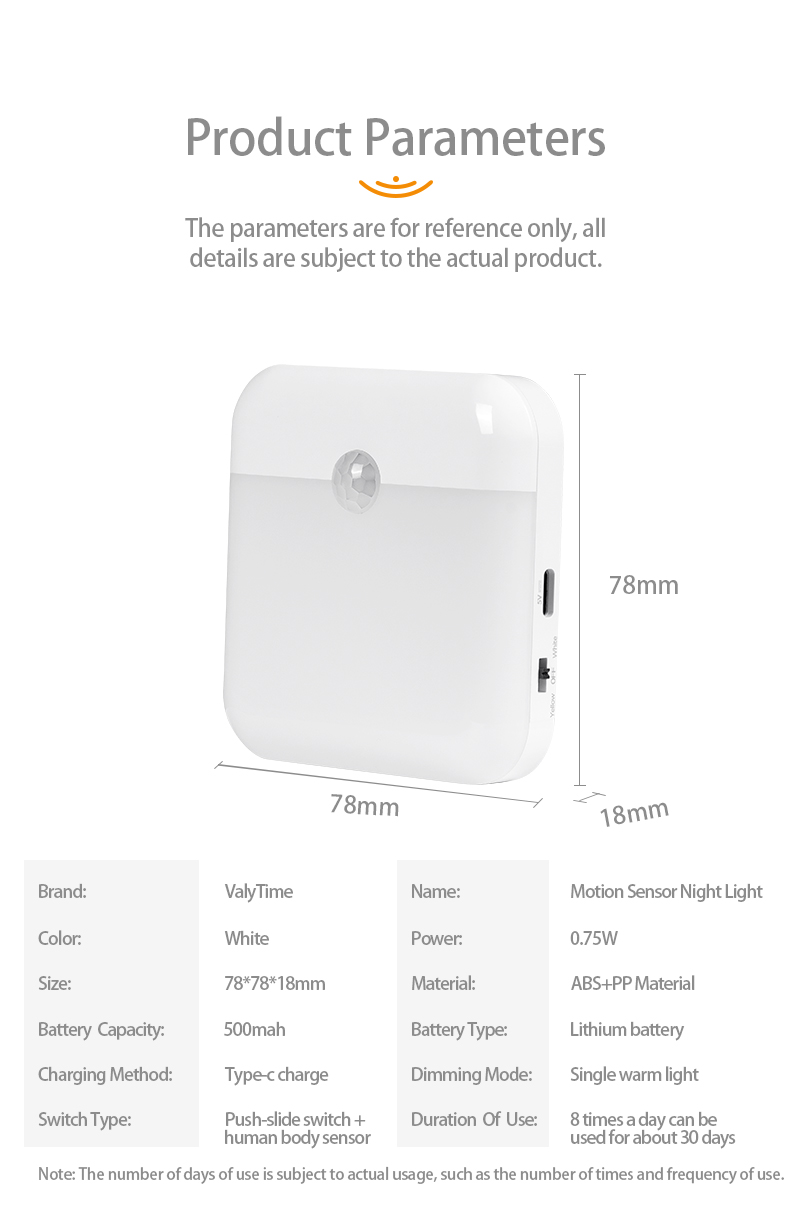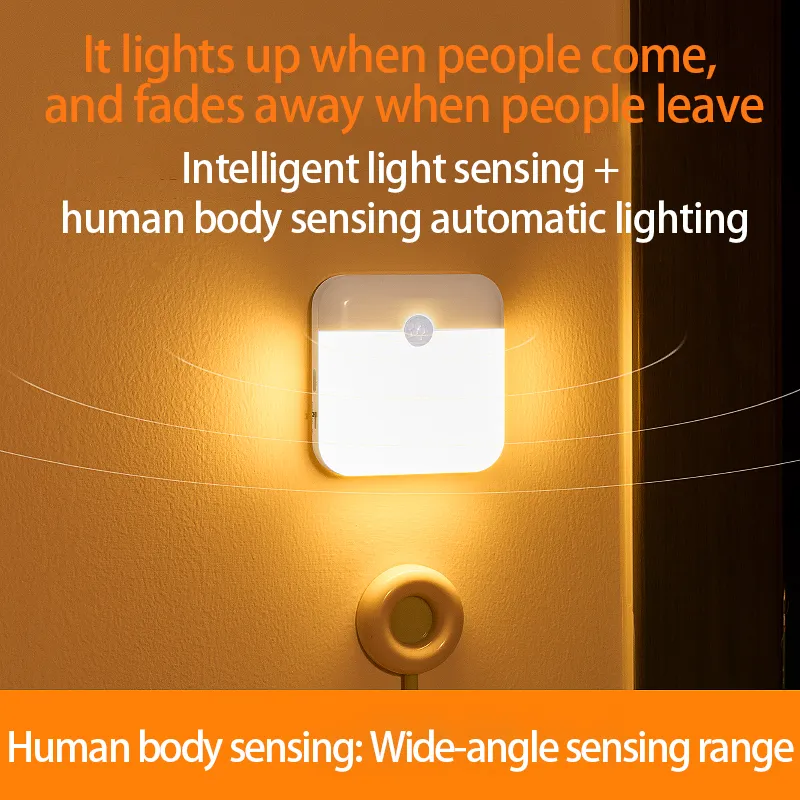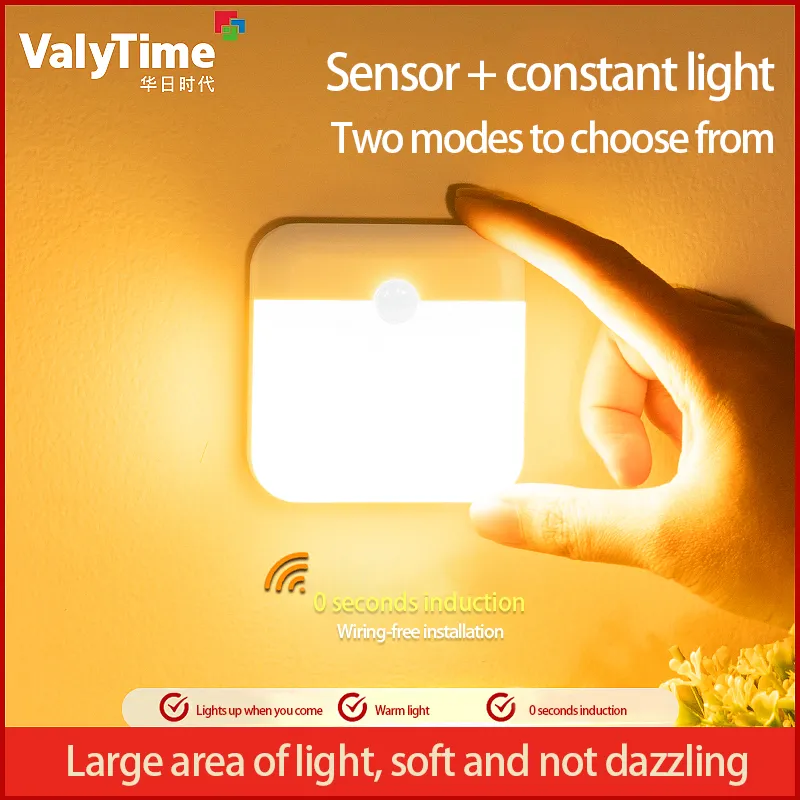At what age is it too old for children to sleep with an LED night light?
In modern families, LED night lights have become an indispensable feature in children's rooms. For infants and young children, soft nightlights can alleviate their fear of the dark and facilitate nighttime care.
As children age, parents often wonder: At what age is it too old for them to sleep with an LED night light? Will long-term use of LED night lights affect their sleep and health?
This article will comprehensively analyze the scientific basis for using LED night lights for children at different ages, focusing on their optical properties, physiological development, sleep patterns, usage environments, and safety recommendations.

LED Night Light: What is it and what does it do?
1. The Concept of an LED Night Light
An LED night light is a low-brightness, soft-color LED light source. It is typically used in children's bedrooms, bedside tables, or hallways to provide dim illumination at night. Compared to ordinary incandescent or fluorescent lamps, LED night lights offer the following advantages:
• Low energy consumption: LED night lights typically consume between 0.5 and 3 watts, allowing for extended use without significantly increasing household electricity bills.
• Low heat generation: LED light sources inherently generate little heat, posing no risk of burns to children's skin even when left on for extended periods.
• Optional color temperatures: LED night lights on the market often offer warm colors (2700–3000K), neutral white (4000K), and RGB color-changing modes, allowing you to choose the color you want based on your child's needs.
• Long and safe lifespan: LED chips typically last over 20,000–50,000 hours, making them more durable than incandescent lamps and requiring less frequent replacement.
2. Main Functions of LED Night Lights
LED night lights provide more than just illumination. Their main functions include:
• Safety lighting: Providing low-intensity light when children get up or move around at night to prevent bumps and bumps.
• Psychological security: Soft light can alleviate children's fear of the dark and create a safe sleeping environment.
• Convenient nighttime operation for parents: No need to turn on bright lights to monitor children, minimizing distractions.
• Visual enlightenment and mood regulation: Colorful LED night lights or RGB night lights can stimulate the visual senses and create a soothing or energizing atmosphere.
Overall, LED night lights serve not only as a lighting tool but also as an auxiliary device for children's sleep environment.

The Scientific Relationship between Children's Sleep and Light Exposure
1. The Effect of Light on Melatonin Secretion
Melatonin is a key hormone that regulates the body's circadian rhythm. Children need sufficient melatonin secretion to fall asleep at night to ensure deep sleep. Scientific research shows:
• High blue light sensitivity: LED night lights, especially those with white or RGB color modes, contain a certain proportion of blue light (450–490nm), which can inhibit melatonin secretion.
• Effect of light intensity: Excessively bright light sources can lower melatonin levels, delaying sleep onset and increasing light sleep.
• Prolonged light exposure: Leaving an LED night light on all night can disrupt children's sleep cycles.
2. Age and Light Sensitivity
• Infants and toddlers aged 0–3 years: Their circadian rhythms are not yet fully established, and their sensitivity to light is low. However, overly bright LED night lights can still disrupt circadian rhythms.
• Preschoolers aged 3–6 years: Their melatonin secretion is becoming more regular, and they are sensitive to blue light interference. Therefore, they should use warm-colored, low-brightness night lights.
• School-aged children aged 6 years and older: Their circadian rhythms are closer to those of adults. Long-term use of high-brightness or blue-light night lights may disrupt deep sleep or delay sleep onset.
This shows that the use of LED night lights during children's sleep must be regulated according to their age and physiology.

What are the potential health effects of LED night lights on children?
1. Sleep Rhythm Disruption
Long-term use of high-brightness or high-color-temperature LED night lights may suppress melatonin secretion, leading to the following problems:
• Delayed sleep onset
• Increased light sleep
• Increased nighttime awakenings
Especially for preschool and school-age children, overly bright night lights may disrupt deep sleep and indirectly affect growth hormone secretion.
2. Vision and Eye Health
• Direct exposure to blue light may cause short-term visual fatigue, and long-term accumulation may increase retinal stress.
• Warm, low-brightness LED night lights are minimally irritating to the eyes; we recommend choosing ones with soft light and diffuser designs.
• RGB night lights with too many color wavelengths may cause eye discomfort if viewed directly for extended periods.
3. Psychological Dependence and Behavioral Impacts
• Prolonged use of night lights may cause children to develop a dependency and a conditioned sleep response, requiring the presence of light to fall asleep.
• With age, psychological dependence may affect the ability to fall asleep independently.
4. Light Environment and Environmental Adaptation
• Excessively bright night lights or improper placement (such as directly on the bed or eyes) can affect physiological and psychological adaptation.
• Light that differs significantly from natural darkness may delay a child's ability to adapt to darkness.
At what age is it appropriate for children to use LED night lights?
1. Infants and Toddlers (0–3 years)
• Low-brightness, warm-light LED night lights can be used for short periods of time, primarily for nighttime care.
• The light should not be directed into the eyes, and brightness should not exceed 10–15 lumens.
• The focus should be on safety and psychological comfort, not on all-night lighting.
2. Preschoolers (3–6 years)
• Warm-light LED night lights with a color temperature below 3000K and low blue light content are recommended.
• Night lights can be set to automatically turn off after sleep to avoid being on all night.
• Moderate use of night lights can help alleviate fear of the dark, but children should be gradually trained to adapt to darkness.
3. School-Age Children (6 years and older)
• Most children can fall asleep independently in a dark environment.
• Leaving LED night lights on for extended periods may delay sleep onset or increase the frequency of light sleep.
• Parents are advised to gradually reduce night light use to allow children to adapt to natural darkness, thereby maintaining circadian rhythms and deep sleep.

LED Night Light Selection and Usage Recommendations
1. Light Intensity and Brightness
• Low-brightness LED night lights are best for children's sleep, and it's recommended to keep them within 10–15 lumens.
• High-brightness night lights can easily suppress melatonin secretion and should be avoided from being used all night.
2. Color Temperature
• Warm light (2700–3000K) is the best choice, with low blue light content and a gentle, non-irritating feel.
• RGB or cool white night lights should be used with caution, especially during sleep.
3. Lamp Placement
• Avoid direct light into the eyes; place them to the side of the bed or away from the bed.
• Use a diffuser or shade to ensure a softer light.
4. Operating Time
• Infants and toddlers can use the light for short periods at night. Preschoolers can set a timer to turn it off. During school age, children should gradually transition to no night lights during sleep.
• Avoid leaving the light on all night, especially for children over 6 years old.
5. Safety and Quality
• Choose a safety-certified LED night light that is fireproof and flame-retardant, with safe and reliable circuitry.
• Regularly check wiring and sockets to prevent accidents.
Parent FAQs
1. Is an LED night light necessary for children who are afraid of the dark before falling asleep?
A soft night light can be used initially, but the brightness and duration should be gradually reduced to allow the child to adjust to the darkness.
2. Are RGB LED night lights suitable for long-term use?
RGB colored night lights may have a high ratio of brightness to blue light, so they are not recommended for school-age children to keep on all night.
3. How do you determine the appropriate brightness for a night light?
A soft light that illuminates the bed is sufficient, avoiding direct sunlight into the eyes. The brightness should generally be kept between 10 and 15 lumens.
4. Is there any scientific basis for the duration of night light use?
It is recommended that night lights be turned off after children fall asleep, especially for preschoolers and school-age children, to ensure melatonin secretion and deep sleep.
LED Night Lights: Suitable and Unsuitable Ages for Children
LED night lights provide multiple functions in children's sleep environments, including safety, psychological comfort, and visual enlightenment. However, children of different ages have different light sensitivities. Scientific research and Sleep ValyTime recommend the following:
1. Infants and toddlers aged 0–3: Short periods of use of a soft-light LED night light can alleviate nighttime fears.
2. Preschoolers aged 3–6: A low-brightness, warm-light LED night light can help with sleep, but it's best to set it to automatically turn off.
3. School-age children aged 6 and older: Most children no longer need a night light on all night and should gradually adjust to natural darkness.
Parents should consider their child's age, sleep habits, psychological state, and the characteristics of the LED night light to appropriately manage usage time, brightness, and color temperature to ensure a safe and comfortable sleep environment for their child while fostering healthy sleep habits.
What makes Huari Lighting a trusted LED manufacturer in China?
Established in 1996, Huari Lighting Co., Ltd. has grown into one of China’s reliable LED lighting manufacturers. Our 92,000-square-meter facility produces over one million LED lamps monthly, supported by strict ISO 9001 and ISO 14001 systems.
We manufacture and supply LED night lights, wall vanity lamps, recessed downlights, panel lights, and cabinet lighting for global buyers. For customers seeking a dependable LED supplier with factory-direct prices, Huari provides professional service, wholesale discounts, and custom-made lighting products.
